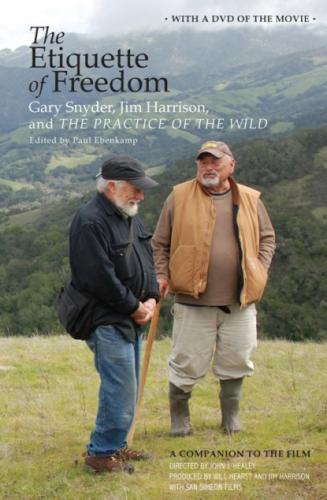Table of Contents
Postscript: Current Reflections on the Earth
PART TWO - Transcript of The Film
Further Talks: Gary Snyder and Jim Harrison
Outtakes: Shoemaker/Slovic/Kyger/McClure
Foreword
WILL HEARST
The chance to make a film is always a long shot. Unlike a poem, it’s a collaborative game. No one person controls all the variables. This is how it happened . . . this time.
In the late ’60s while I was still in school, but more interested in sex, travel, and girls than in scholarship, I became interested in the literature of the Beats. This had something to do with California. I was raised in the cold granite corridors of New England, but we spent summers in the West, a sunset land of freedom, possibility, bigger vistas, and hot weather. I wanted to write, live, like Kerouac.
I read The Dharma Bums, and I liked that book better than On the Road, which is of course Kerouac’s masterpiece. I loved the originality, the story, the depiction of that hip Mill Valley scene, and the marvelous language. But one of the things that stood out in that story was the portrait, in a fictional setting, of the character Japhy Ryder. This person who remains at the center of the action is a vivid character with a particularly different and unique point of view. He has his own interior compass, and that character always fascinated me.
By the ’70s I discovered the poetry of Gary Snyder, Rip Rap and Cold Mountain Poems, and loved it because it had such a feeling of the West. He wasn’t a New England academic; there was something fresh and Western about the voice of that poet.
Sometime later, and I don’t remember exactly when, I finally uncovered, in a biography or some criticism, that the real poet Gary Snyder was the person on whom the character Japhy Ryder had been based.
I think that was the birth of this project. It became a detective story. How did they connect? As time went by and the Beat Generation began to pass from the scene, it occurred to me that Gary was still practicing, and I became interested to see if he would write for the newspaper. By that time I was the editor and publisher of The Examiner, in San Francisco, and we had an Op-Ed page feature, which was a relatively new thing at the time, where we invited people who were not part of the staff of the paper to write essays and editorials and generally nonfiction material.
So we asked Gary if he would be interested, and he sent back this absolutely beautiful essay later republished in his collection, The Practice of the Wild. Clearly this man, the Pulitzer Prize-winning poet, could write simply beautiful prose: thoughtful, scientifically grounded, but with a haiku voice.
More time went by, and I met Gary a few times and got to know him, and I continued to believe that he had a wonderful gift with words. He had a clear, unusual mind, and there was something utterly unique about him and his work. And the relationship between the poetry and the poet began to come into focus in my mind. He had a view of the natural world that transcended politics as usual. He was like Japhy Ryder, but he was not Japhy Ryder. Still, I don’t think I knew Gary very well.
At another point, working to help found Outside magazine, I came to know, distantly, Jim Harrison, who was also a poet but perhaps better known as a novelist. Jim had written a very funny but highly irreverent profile of his fishing trips in Key West. It was so raw I wondered if it could ever be published. My first impression of Jim was that he could not abide any kind of flattery, and he could detect a false note with the precision of a delicate radiometer. Even on the telephone one could hear in his raspy voice and fine diction the influence of poetry.
It was not until after the year 2000, maybe twenty-five years later, that I really got to know Jim and spend time with him. We became friends, and so one day I posed the idea to him, in the form of a question: “Hey, do you think it would make sense to try to make a documentary picture, a kind of profile, of Gary Snyder?” And Jim, to his credit, instantly said, “Yeah, I think that’s a
